Visit The Beautiful Gujari Mahal To Witness The Royal Heritage Site Of Gwalior In 2025
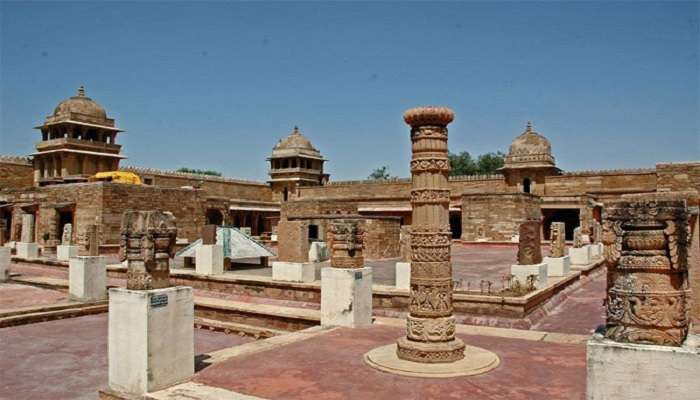
Nestled in Gwalior, Madhya Pradesh, “Gujari Mahal” is a majestic historic destination famous worldwide for its past significance and architecture. Over the years, Gujari Mahal has slowly transformed itself from being just an ancient site to now a heritage museum that holds a wealth of past possessions. Gujari Mahal sees many visitors, both tourists and locals, in a month. The palace has been an epitome of pure love, as the story of its past tells us that Raja Man Singh Tomar, a Rajput ruler of Gwalior, built this picturesque mahal in the 15th century for the beautiful Mrignayani, his Gujari queen. Now, the Gujari Mahal Archaeological Museum is dedicated to her. Visit the museum to see the vast collection of Jain and Hindu sculptures, coins, artefacts and terracotta items that hold great historical significance to the past of not only Madhya Pradesh but the entire India. Read on to understand the rich history and cultural heritage of Gujari Mahal.
About Gujari Mahal
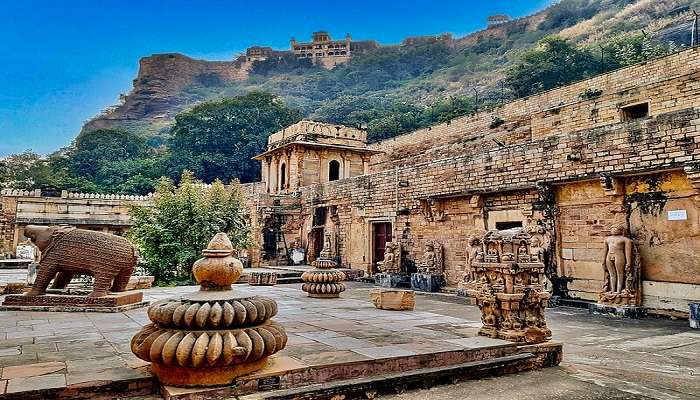
Located in Gwalior Fort in Madhya Pradesh, Gujari Mahal is a historical fort that still stands tall after facing the hardships of time over the years. The Mahal, now turned into an archaeological museum, hosts an amazing collection of ancient sculptures, terracotta figurines, coins, and inscriptions. There is a statue of Salabhanjika, a marvellous miniature sculpture in the custody of the museum’s curator, which can be seen on request.
There is also a school in Gujari Mahal that was intended for British soldiers, but now it is run by Scindia and is one of the best schools in the country. The museum is also famous for its large collection of photographs, such as monuments of India and Bagh Cave paintings.
Must Read: Places To Visit In Gwalior
History Of Gujari Mahal
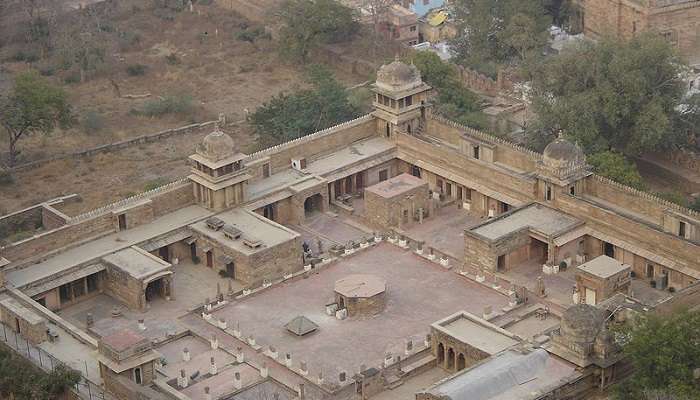
It was built by Raja Mansingh for his adorable queen, Mrignayani, in the 15th century, who was the daughter of a milk seller. There is another interesting story about Raja Man Singh Tomar. During one of his hunting expeditions, he saw a young Gujar woman separate two buffaloes with her hands. He saw the beauty and bravery of that girl and desired to make her his ninth queen.
She put a condition that she would not live in the royal palace with the other 8 queens, but she wanted to live a free life like her village and a separate palace in which they wanted the presence of Rai River water. On these pre-conditions of marriage, Raja Man Singh agreed and obtained a large palace built at the entry to the fort in 1520 for her, later known as the famous Gujari Mahal.
Things To Do At The Mahal
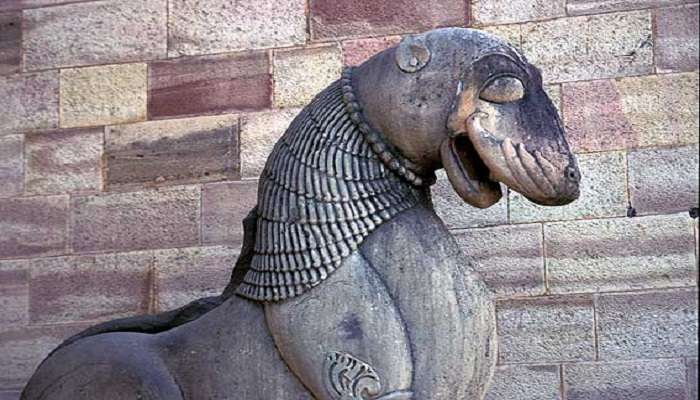
At Gujari Mahal, tourists can do several things to get an extensive and unique experience of ancient historical and heritage culture. They can enjoy looking at the wide variety of coins and sculptures dating back to the first or second centuries, which are documented and available for visitors.
Take guided tours: Guided tours can help you better understand the possessions of its Archaeological Museum. The guides available at your service have worked here for years and know the significance of each possession.
Photography: The museum is located in the Palace, and there are several sites where tourists can capture stunning images and photographs. According to museum guidelines, photographing exhibits in a museum is allowed, and tourists can carry rich historical sculptures home.
Explore Gwalior’s Rich History: The museum’s exhibits and photographs provide deeper insights into Gwalior’s rich historical consequence and cultural expansion, educating and inspiring tourists and locals of all ages.
Suggested Read: Things To Do In Gwalior
Entry Fees & Timing Of The Mahal
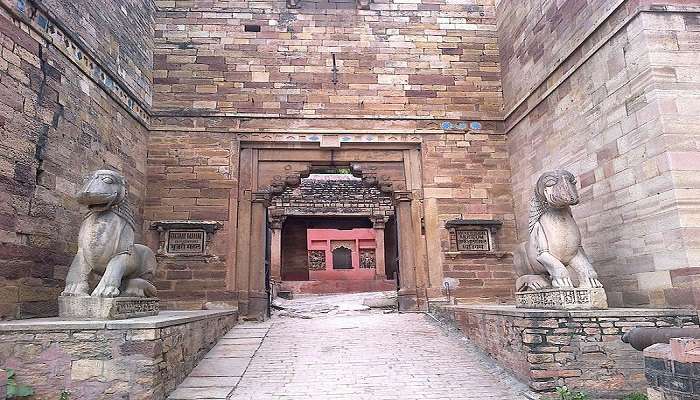
The Gujari Mahal Archaeological Museum is open from 10 AM to 5 PM. It is open on all days of the week except Fridays and public holidays. During the open hours of the museum, visitors can come and explore the significant historical and cultural trials of one of the renowned destinations in Gwalior.
The entry fee for Gujari Mahal is Rs 20 for Indians and Rs 400 for foreigners. Photography or videography is also allowed in the museum with a nominal fee. Tourists can purchase tickets from the museum’s entrance. Privileges may be available for senior citizens and students.
How To Reach The Mahal
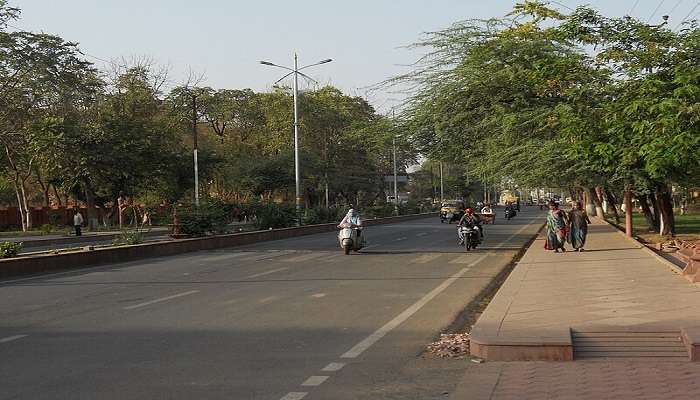
Gwalior is one of the major cities in Madhya Pradesh, considering the historic city and its forts have been headed by multiple historic Indian kingdoms. It also appeared as a top tourist attraction in central India, while numerous industries and organisational offices emerged. Due to the continuous growth of the Gwalior city, it is well-connected by roads, air, and trains, making travelling easier. Now, if you are looking for the best option to reach Gujari Mahal, take advantage of this information here –
By Road: Gujari Mahal in Gwalior is easily accessible to the major cities of North India, including Delhi, Haryana, Rajasthan, and Uttar Pradesh. The roads are in excellent condition and offer good connectivity to and from these cities. Direct buses and taxis are available from the Gwalior Bus Stand, about 3 km from the Palace.
By Train: Gwalior Railway Station is the nearest one to Gujari Mahal, as it is just three kilometres away via Fort Road and Amarkantak Enclave Road. You can easily take a taxi or auto to reach here.
By Air: The nearest airport to the Mahal is Gwalior Airport, just 8 kilometres away via Bhind Road and Airport Road. Many prepaid or app-based taxis are available from the airport.
Further Read: Shopping In Gwalior
Gujari Mahal Archaeological Museum stands as a sign of Gwalior’s rich cultural heritage and archaeological legacy, inviting visitors to venture on a spellbinding journey through the passages of time. Its impressively curated exhibits, ancient antiques, and outstanding photographs offer a glimpse into the rich narrative of Gwalior’s past, inspiring and educating tourists and locals about the region’s storied history. So plan your trip to Madhya Pradesh with our guiding tour packages to experience the mysteries of Gwalior’s charming legacy.
For our editorial codes of conduct and copyright disclaimer, please click here.
Cover Image Credit: Gyanendrasinghchauha for Wikimedia Commons
Frequently Asked Questions About Gujari Mahal
What is the story of Gujari Mahal?
Mrignayani, the 9th fiancee of Raja Man Singh Tomar, put a condition that she would not live in the royal palace with the other 8 queens; instead, she wanted a separate palace in which they wanted the presence of Rai river water. Raja Man Singh agreed and offered a large palace, which was later known as the famous Gujari Mahal.
Who built the Gwalior Fort?
Raja Man Singh Tomar built a Gwalior fort for his Gujari queen, Mrignayani, in the 15th century, to which the Gujari Mahal Archaeological Museum is dedicated.
What is the entry fee for Gujari Mahal?
The entry fee for this enchanting mahal is Rs 20 for Indians and Rs 400 for foreigners.
Is photography allowed in the Gujari Mahal Archaeological Museum?
Yes, photography or videography is also allowed in the museum with a nominal fee. Tourists can capture images of historical sculptures or ancient exhibits.
When was the Gujari Mahal transformed into the Archaeological Museum?
The Archaeological Survey of India converted the Gujari Mahal into an archaeological museum in 1922 to preserve and demonstrate the rich cultural heritage of Gwalior and the surrounding regions.
People Also Read:
Jahangir Mahal Jal Mahal Lotus Mahal

We all have to begin somewhere. This is where I start and I hope that my writings encourage you to begin. To new beginnings and conquering new places!











